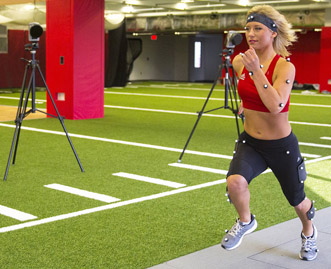
Athletic Performance Research
Date of this Version
2019
Document Type
Article
Citation
Campos, C.E., Lage, G.M., Andrade, A.G.P., Couto, C.R., Santos, S.P., Profeta, V.L.S., & Ugrinowitsch, H. (2019). Changes on movement control of dart throwing under distance and target weight constraints. Journal of Human Sport and Exercise, 14(4), 925-933. doi:https://doi.org/10.14198/jhse.2019.144.20
Abstract
The aim of the study was to verify the effects of dart weight and target distance on kinematic variables of the movement control of the underarm dart throwing task. Four women and one man performed the task of throwing a dart at two horizontal circular targets located at 2m (Nt) and 3m (Ft) away, with two different weights, 22g (Ld) and 44g (Hd). On the first phase of the experiment, the human volunteers performed 200 trials per day during four sessions. On the fifth day, it had 40 more trials in a pseudo random order that were recorded and analysed. A high precision camera recorded the kinematic variables amplitude of the movement (AOM), release height, movement time, release velocity and release angle, with a frequency of acquisition of 100 Hz. Performance was measured by the distance from the actual dart position to the target bull’s eye. The analysis revealed that increasing the mass of the dart diminished only the release angle. However, increasing the distance of the target increased in the AOM and the movement time of the arm, the release velocity of the dart and increased the absolute error. The results show that the motor control system has ability to deal with external constraints adjusting control strategies, which is represented by kinematic features. Moreover, our results suggests that varying the mass of implements, as a constraint may be a good candidate to improve the analysis for both motor control and ability during practice.
Included in
Bioinformatics Commons, Biomechanics Commons, Biophysics Commons, Exercise Science Commons, Motor Control Commons, Psychology of Movement Commons


Comments
© Faculty of Education. University of Alicante
This work is licensed under a Attribution-NonCommercial-NoDerivatives 4.0 International (CC BY-NC-ND 4.0)